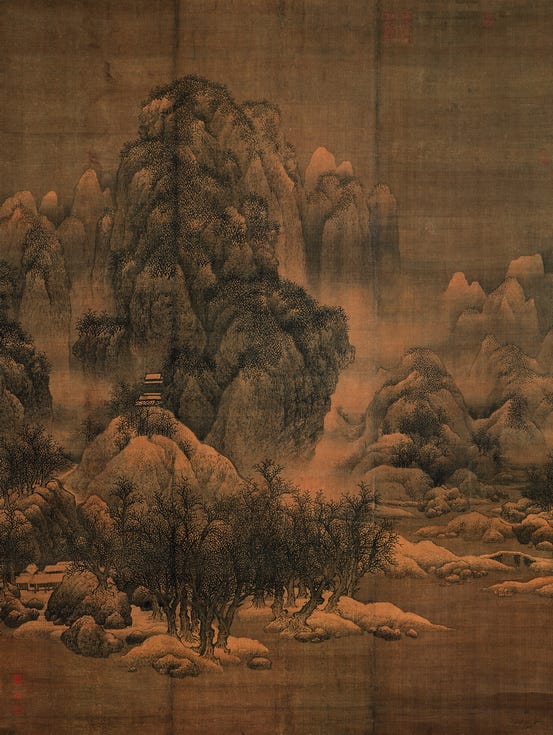
“300 Tang Poems” is one of the most, if not THE most, over the top stamps ever. Issued by China Post in September 2009 to mark the 60th anniversary of P.R.C. rule, it is the world’s first multimedia stamp. A bit of background: “300 Tang Poems” is actually the name of an anthology of poems from the Tang dynasty (618-907 AD) compiled in the 18th century. In this series, the 6 stamps feature 6 poems by 6 of the most celebrated poets from the anthology:
Li Bai/Li Bo’s Through the Yangzi Gorges (李白《下江陵》)
Du Fu’s A View of Taishan (杜甫《望岳》)
Bai Juyi’s Song of the Pipa/Guitar (白居易《琵琶行》)
Wang Zhihuan’s At Heron Lodge (王之涣《登鹳雀楼》)
Li Shangyin’s Untitled (李商隐《无题》)
Zhang Jiu Ling’s Looking at the Moon and Thinking of One Far Away (张九龄《望月怀远》)
The English translations of them can be seen here.
Designed in a vertical composition style by Wang Huming 王虎鸣, the six stamps have a face value of 9.3 yuan.
The cool factor lies here:
Visible, audible, touchable and smellable, this is the first set of multimedia stamps of China. The micro-version of the book “300 Tang Poems” is engraved on the edging of the sheetlet, which makes it “a stamp sheetlet of a book” [Source].
How is this possible?
Audible Like the compilation of 300 Tang Poems featuring 313 works by 77 different Tang dynasty poets, the stamps are engraved with a chip storing all 313 of those works. All you need to do is to tap the stamps with a device called the aigo (愛國者) pen, and the chip in the pen will recite those poems. The pen is a product of Beijing Huaqi Information Digital Technology. It works, as described by CRIEnglish.com, by “decoding an invisible digital water mark with its infrared camera and then sending the information to be played on an MP3 player.” This is a huge deal for data storage, a statement made by applying the technology to one of the smallest pieces of paper in the world–a postage stamp. The digital information optics identification and touch interaction technology however has been around in Europe for a long time, though its application is currently limited [Source].
Touchable The stamps are made using intaglio printing. Think paper or plastic currency, passports, etc.
Smellable The stamps are printed with ink containing capsules that, upon friction, will release the smell of sandalwood to simulate an air of antiquity.
Design
The 5 words: “唐诗三百首” or “300 Tang Poems” on the top right hand corner of the stamp are based on the calligraphy by Tang dynasty calligrapher Yan Zhenqing 颜真卿. Yan wrote in regular script (as opposed to cursive, semi-cursive, or those that came before) and his Yan-style square form writing is the textbook-style go-to writing today. Known also for his personality and moral virtues, his calligraphy emphasizes boldness and strength. His brush strokes begin with a subtle head and ends with a bulging twist to illustrate centripetal force in the writing [Source].
The palmette-like floral pattern on the right hand side (宝相花) is one of the most famous Chinese decorative motifs since the Tang dynasty and is featured in embroidery, pottery, metalwork etc.
The backgrounds of the stamps are printed with holographic ink.
The moon in the Zhang Jiu Ling’s poem stamp is printed with phosphorescent ink.
The stamp sheet contains the full content of all 307 poems (313 - 6 being featured on the stamps themselves) micro-printed on it. That’s more than 25,000 words, all at 0.4mm.
The mountain backdrop design on the bottom of the sheet is a historic ink painting called Winter Landscape 《雪景寒林图》 by Fan Kuan 范宽, famous landscape Chinese painter of the Northern Song dynasty.

Winter Landscape 《雪景寒林图》 by Fan Kuan 范宽
Source: Tianjin Museum
References:

